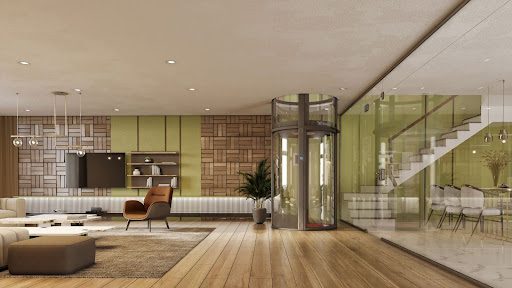Sustainability is a growing concern for homeowners looking to reduce their carbon footprint. Home improvement projects offer an excellent opportunity to embrace eco-friendly practices. By incorporating sustainable upgrades, you can lower your energy consumption, minimize waste, and create a healthier living environment.
1. Understanding Sustainability in Home Improvement:
Sustainable home improvement involves choosing materials, products, and techniques that minimize environmental impact. This can range from energy-efficient appliances to renewable materials and water conservation strategies. The benefits of eco-friendly upgrades extend beyond environmental protection, often resulting in cost savings and increased home value.
Benefits of Eco-Friendly Upgrades:
Eco-friendly home improvements offer numerous advantages. These include lower utility bills, improved indoor air quality, and a reduced carbon footprint. Additionally, sustainable renovations can increase your home’s resale value, making it an attractive investment for the future.
2. Low-Cost Sustainable Upgrades
You don’t need a hefty budget to start embracing sustainability at home. Many low-cost upgrades can significantly reduce your environmental impact and save you money in the long run.
Energy-Efficient Lighting:
Swapping out traditional incandescent bulbs for LED or CFL alternatives is a simple and affordable change. These energy-efficient options consume less electricity, last longer, and reduce your carbon footprint. For example, replacing ten incandescent bulbs with LED equivalents can save you up to $75 annually on your electricity bill.
Low-Flow Water Fixtures:
Upgrading to low-flow showerheads, faucets, and toilets can drastically reduce your water consumption. Look for products with the WaterSense label, which signifies they meet EPA water-efficiency standards. A low-flow showerhead can save a family of four up to 15,000 gallons of water per year.
DIY Insulation Techniques:
Proper insulation is crucial for energy efficiency. Consider sealing air leaks and adding insulation to attics, exterior walls, and crawl spaces. DIY projects like installing weatherstripping or caulking drafty areas can make a significant difference in your heating and cooling costs.
3. Moderate Budget Improvements
If you have a moderate budget, consider these eco-friendly upgrades that offer long-term benefits and cost savings.
Eco-Friendly Flooring Options:
Sustainable flooring choices like bamboo, cork, or reclaimed hardwood not only look stunning but also have a lower environmental impact. These materials are renewable, durable, and often come from responsibly managed sources. Cork flooring, for instance, is naturally antimicrobial and insulating, promoting better indoor air quality.
Smart Home Thermostats:
Programmable or smart thermostats allow you to precisely control your home’s temperature and energy usage. These devices can learn your habits and adjust temperatures accordingly, saving you up to 10% on heating and cooling costs annually.
Water-Saving Appliances:
Investing in water-efficient appliances like washing machines, dishwashers, and hot water heaters can significantly reduce your water consumption. Look for Energy Star-certified models, which use up to 50% less water than standard appliances.
4. High-End Sustainable Renovations
If you have a larger budget, consider these high-end sustainable renovations for maximum efficiency and environmental impact.
Solar Panel Installation:
Harnessing the power of the sun through solar panels is a long-term investment that can drastically reduce or eliminate your reliance on fossil fuels. While the upfront costs can be substantial, solar panels can provide significant energy savings over time and may qualify for tax credits or incentives.
Green Roofs and Rainwater Harvesting Systems:
A green roof involves covering your roof with vegetation, which provides insulation and helps manage stormwater runoff. Rainwater harvesting systems collect and store rainwater for use in landscaping, flushing toilets, or other non-potable applications, reducing your water consumption.
Advanced Energy-Efficient HVAC Systems:
Upgrading to a high-efficiency heating, ventilation, and air conditioning (HVAC) system can dramatically improve your home’s energy efficiency. Look for systems with high SEER (Seasonal Energy Efficiency Ratio) ratings, which use less energy and provide better temperature control.
5. Innovative Technologies: Pneumatic Home Elevators
As sustainable living becomes more prevalent, innovative technologies are emerging to cater to eco-conscious homeowners.
Benefits of Pneumatic Elevators:
Pneumatic elevators are an energy-efficient and space-saving alternative to traditional elevators. They operate using air pressure, making them environmentally friendly and cost-effective to run.
Sustainability Features:
Pneumatic elevators require minimal power and generate virtually no emissions. They are also compact, reducing material usage during construction. Additionally, many models incorporate recycled or renewable materials in their design.
Cost Analysis:
While the initial installation costs may be higher than conventional elevators, pneumatic elevators offer significant long-term savings on energy bills. Their low maintenance requirements and durability also contribute to their cost-effectiveness over time.
6. Choosing Sustainable Materials
When embarking on home improvement projects, selecting eco-friendly materials is crucial for minimizing your environmental impact.
Recycled and Renewable Materials:
Look for building materials made from recycled or renewable sources, such as reclaimed wood, recycled plastic, or bamboo. These materials reduce waste and have a lower carbon footprint compared to traditional options.
Non-Toxic Paints and Finishes:
Conventional paints and finishes can release harmful volatile organic compounds (VOCs) into your home’s air. Choose low-VOC or zero-VOC alternatives to promote better indoor air quality and reduce exposure to toxic chemicals.
7. Technology and Sustainability
Embracing technology can significantly enhance your home’s sustainability and energy efficiency.
Integrating Home Automation for Efficiency:
Smart home automation systems allow you to control various aspects of your home, such as lighting, temperature, and appliances, from a central hub or mobile app. This level of control can optimize energy usage and minimize waste.
The Latest in Sustainable Home Technology:
Stay informed about the latest advancements in sustainable home technology, such as energy-efficient appliances, smart home systems, and renewable energy solutions. These innovations can help you stay ahead of the curve and maximize your home’s eco-friendliness.
8. Landscape and Exterior Improvements
Sustainable landscaping and exterior improvements can enhance your home’s curb appeal while minimizing environmental impact.
Native Plants and Xeriscaping:
Incorporate native plants and drought-resistant species into your landscaping to reduce water consumption. Xeriscaping, or designing landscapes that require minimal irrigation, can significantly lower your water usage while creating a beautiful outdoor space.
Outdoor Water Conservation Strategies:
Consider installing rain barrels to collect and reuse rainwater for your garden or landscaping needs. Additionally, explore options like permeable pavers or rain gardens, which help manage stormwater runoff and prevent erosion.
9. Financial Incentives and Assistance
Making sustainable home improvements can be more affordable with the help of financial incentives and assistance programs.
Federal and State Incentives for Eco-Friendly Upgrades:
Various federal and state incentives, such as tax credits, rebates, and loan programs, are available to homeowners who invest in energy-efficient or renewable energy upgrades. Research the incentives available in your area to maximize your savings.
Finding Local Grants and Support:
Many local governments and organizations offer grants or support programs to encourage sustainable home improvements. Contact your city or county officials, utility companies, or non-profit organizations to explore available options in your community.
10. Implementing Your Home Improvement Plan
Once you’ve identified the eco-friendly upgrades you want to pursue, it’s essential to plan and execute your project effectively.
Planning for Sustainability:
Develop a comprehensive plan that considers your budget, timeline, and desired sustainability goals. Research reputable contractors, materials, and products to ensure you make informed decisions throughout the process.
Working with Green Contractors:
Collaborate with contractors who specialize in sustainable construction and have experience with eco-friendly materials and techniques. Their expertise can ensure your project adheres to best practices and maximizes its environmental benefits.
Long-Term Maintenance and Care:
Proper maintenance and care are crucial for ensuring the longevity and efficiency of your sustainable upgrades. Follow recommended maintenance schedules, and consider hiring professionals for complex systems like solar panels or green roofs.
Conclusion
Eco-friendly home improvements offer countless benefits, from reducing your environmental impact to saving money on utility bills. By embracing sustainable strategies, you can create a healthier, more efficient living space while contributing to a greener future.
Recap of Eco-Friendly Strategies:
Throughout this article, we’ve explored a wide range of eco-friendly strategies, from low-cost upgrades like energy-efficient lighting and water-saving fixtures to high-end renovations like solar panel installation and green roofs. Additionally, we’ve discussed the importance of sustainable materials, innovative technologies, and landscaping techniques that promote water conservation.
The Future of Sustainable Home Living:
As awareness of environmental issues grows, sustainable home living will become increasingly mainstream. Emerging technologies and innovative materials will continue to revolutionize the way we approach home improvement, offering more eco-friendly solutions that are both practical and aesthetically pleasing.
Ultimately, embracing sustainability in your home is an investment in the future – for yourself, your community, and the planet. By making conscious choices and implementing eco-friendly upgrades, you can create a comfortable living space that aligns with your values while contributing to a more sustainable world for generations to come.








